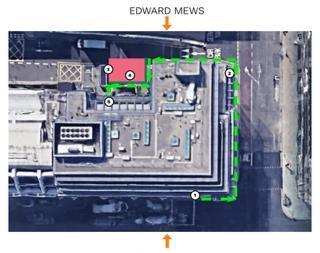On first look, the government’s latest housebuilding figures seem to indicate a reasonably healthy market.

The number of net additional dwellings reached 222,190 in the year to the end of March 2018, a higher figure than in all but one of the past 31 years – that being 2007-08.
However, housing delivery is still well below the government’s own 300,000-per-year target – and digging deeper into the data reveals evidence of a slowdown and significant differences between regions.
Here are some key points arising from the figures.
>> Slower rate of growth
Given that housing completions were at the highest level since the economic crisis, many have taken the figures as a sign that the housing market is still going strong. “[The] statistics strongly suggest that developers are not holding back from delivering housing once planning consents have been given,” says Jason Lowes, partner at commercial property and planning consultancy Rapleys.
Find out more from Lowes - Has the delivery of new housing reached a plateau?
But the rate of growth has slowed significantly. Year-on-year growth has climbed every year since 2012, but this year fell to just 2%, compared with an average of 17% across the three previous years – which Chris Buckle, director, residential research, at Savills, describes as a “substantial slowdown”.
However, some say growth increased again after the end of March, when the period covered by the report ended. Grainne Gilmore, head of UK residential research at Knight Frank, says “more timely” data that captures the number of energy performance certificates (EPCs) granted to new homes “suggests a continued pick-up in activity this year”.
>> PDR downturn
While completions of new-build housing increased 6% year on year, completions of units converted from other uses under permitted development rights dropped by a fifth and accounted for only 13% of total completions, compared with 17% in 2016-17. Lowes says the use of permitted development rights was bound to decline following an initial rush when the system was first introduced in 2015.
“This is likely to be due to a simple reduction in overall stock availability,” he says. “As the floodgates opened, a large number of initial applications was always likely, as was the subsequent drop-off as the most viable sites began to be converted.”
>> Regional disparity
In its analysis of the figures, planning consultancy Lichfields points out that most UK regions “met – and in many cases exceeded – the aggregate of local housing need”. But there were notable exceptions. The South East and the east of England both had shortfalls of more than 10,000 homes in 2017-18, compared with the local housing need estimated under the government’s standard method.
London had an even larger shortfall of around 45,000 homes and the delivery of new homes fell by 20% in the period, with only 12 of the 33 boroughs reporting a year-on-year increase.

“The EPC data suggests there has been a pick-up in activity since March, but the overall data shows that current planning policies have put a dampener on development, at a time when the housing need in London is growing,” says Gilmore.
Interestingly, local plans do not seem to have had a direct impact on the level of housing delivered. Lichfields points out that growth in housing stock was very similar among local authorities that had local plans in place in 2015 – the year when housing completed this year was most likely to have been planned – and those that did not, at 0.96% and 0.95% respectively.
>> What next?
The release of the housebuilding figures has prompted speculation about how the winding down of Help to Buy by 2023 might start to affect housing delivery in the future. Generally, the perception is that its impact will be limited.
“The withdrawal of Help to Buy in 2023 could have an impact on delivery,” says Buckle. “But if only 35% to 40% of the delivery it supports is additional, as [a DCLG-commissioned analysis] suggests, only 14,000 completions actually depend on Help to Buy – just 6.5% of total housing delivery.”






























No comments yet